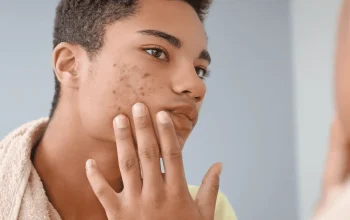Let’s be honest—acne is frustrating enough on its own. But when it leaves behind stubborn dark spots? That’s a whole other battle. Post-inflammatory hyperpigmentation (PIH) is like acne’s unwelcome souvenir, lingering long after breakouts fade. If you’ve got acne-prone skin, you know the struggle. The good news? There are ways to tackle those marks without making your skin freak out again.
What Exactly Is Post-Inflammatory Hyperpigmentation?
PIH happens when your skin overreacts to inflammation—like from a pimple—and pumps out extra melanin. The result? Flat, brown, gray, or even purple spots where acne used to be. Unlike scars, PIH doesn’t change your skin’s texture. But it can stick around for months… or longer if untreated.
Why Acne-Prone Skin Needs Special Care
Here’s the deal: treating PIH on acne-prone skin is a balancing act. You want to fade dark spots without clogging pores or triggering new breakouts. Many brightening ingredients (looking at you, heavy creams) can be too rich for oily or acne-prone skin. And harsh exfoliants? They might just make things worse.
Key Ingredients to Look For
Not all brighteners are created equal. These are the ones that actually work—without causing chaos:
- Niacinamide: Calms inflammation while lightening dark spots. A multitasker.
- Azelaic acid: Fights acne and fades pigmentation. Double win.
- Vitamin C (L-ascorbic acid): Brightens skin but can be strong—start slow.
- Tranexamic acid: Newer on the scene, great for stubborn marks.
- Licorice root extract: Gentle enough for sensitive, breakout-prone skin.
Daily Routine Tweaks for Fading PIH
You don’t need a 10-step routine. Small, consistent changes make the biggest difference:
Morning
- Cleanse: Use a gentle, non-stripping face wash.
- Vitamin C serum: Apply on damp skin for better absorption.
- Moisturizer: Oil-free, non-comedogenic is key.
- Sunscreen: SPF 30+, every single day. UV rays darken spots.
Night
- Double cleanse: Especially if you wear makeup or sunscreen.
- Exfoliate (2-3x/week): Mandelic or lactic acid are gentler options.
- Treatment serum: Niacinamide or azelaic acid here.
- Light moisturizer: Skip heavy creams that could clog pores.
Professional Treatments Worth Considering
If at-home care isn’t cutting it, these in-office options can help—but check with your dermatologist first:
| Treatment | How It Helps | Best For |
| Chemical peels | Removes top layers of skin to reveal brighter skin underneath | Mild to moderate PIH |
| Laser therapy | Targets melanin with precision | Stubborn, deep pigmentation |
| Microneedling | Boosts collagen while fading marks | PIH with slight texture issues |
What Not to Do
We’ve all been tempted, but these moves backfire:
- Picking at spots: More trauma = more pigmentation. Hands off.
- Over-exfoliating: Scrubbing daily irritates skin, worsening PIH.
- Skipping sunscreen: Even indoors. UV rays penetrate windows.
- Using harsh “lightening” creams: Some contain steroids or mercury—dangerous.
The Mental Game
PIH can mess with your confidence. But remember—it’s temporary. Progress isn’t linear. Some days your skin looks brighter; other days, not so much. That’s normal. Consistency beats perfection every time.
And hey—those spots? They’re proof your skin knows how to heal. Just give it time (and the right tools).








